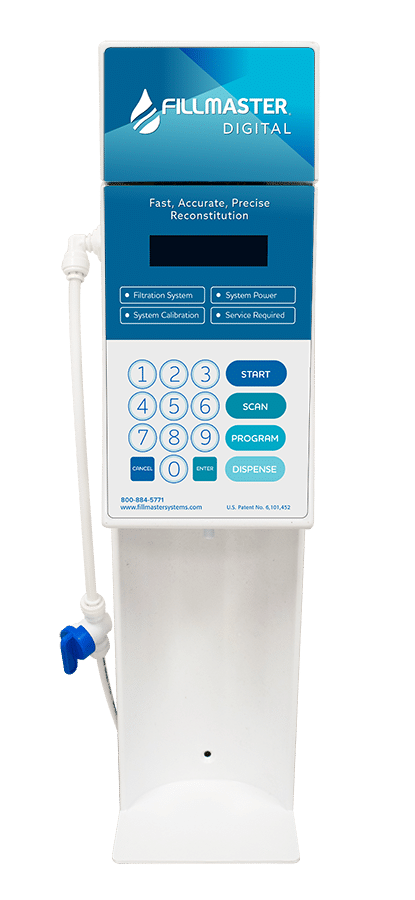In the world of pharmacy, patient safety should always be the number one priority. The typical pharmacy workflow is made up of plenty of tasks that leave room for human error, especially if a pharmacist or pharmacy technician is overwhelmed with work. By automating some of the more routine tasks like dispensing liquid medications, pharmacy employees can guarantee a higher level of dispensing accuracy and improved patient safety.
Pharmacists and pharmacy technicians work so hard to ensure accuracy, but the stressful, fast-paced nature of their jobs can make mistakes more likely. Not to mention, the nature of reconstituting a medication in the pharmacy disrupts a well-designed workflow. Liquid medications cannot be reconstituted until patients comes to pick them up, so the pharmacist or pharmacy technician must stop what they are doing to prepare the medication while the customer waits.
Manually reconstituting a medication means that a pharmacy employee must read the volume of water needed on the medication’s label, measure the quantity of water needed from a jug of distilled water into a graduate, and add the water to the powdered medication. An error in any part of that process could lead to an incorrectly prepared medication. It would be easy to misread the volume of water printed on the label, the numbers printed on the graduated cylinder or syringe, and possibly even omit a portion of the water, which is dispensed in two parts. Reconstituting the medication with too much or too little water could affect the concentration of the medicine, leading to incorrect dosing.
With the amount of work pharmacists and pharmacy technicians must complete each day, automating medication reconstitution makes the process safer for patients and more efficient for pharmacy employees. An automated pharmacy water dispenser takes reconstituting medications from a slow, error-prone process to a quick, safe one. Instead of measuring the water by hand, pharmacists and pharmacy technicians can simply scan the medication’s barcode on the dispenser. The dispenser reads the amount of water needed from the barcode, and then adds the correct amount to the medication automatically. The pharmacy employee no longer has to measure out the water by hand, so the process takes less of their time and frees them up to spend more time helping patients. Additionally, automated water dispensers add water in two parts and audibly remind the user if a part of the process has been missed.
In the pharmacy, pharmacists and pharmacy technicians do everything in their power to ensure the safety of their patients, but conditions behind the counter can make that difficult. Pharmacy automation supplies are a major step towards making processes like reconstituting medications safer for patients. Using a pharmacy water dispenser not only makes the task quicker and easier for pharmacists and pharmacy technicians but also gives them the confidence that they are providing their patients with accurately prepared medications.

